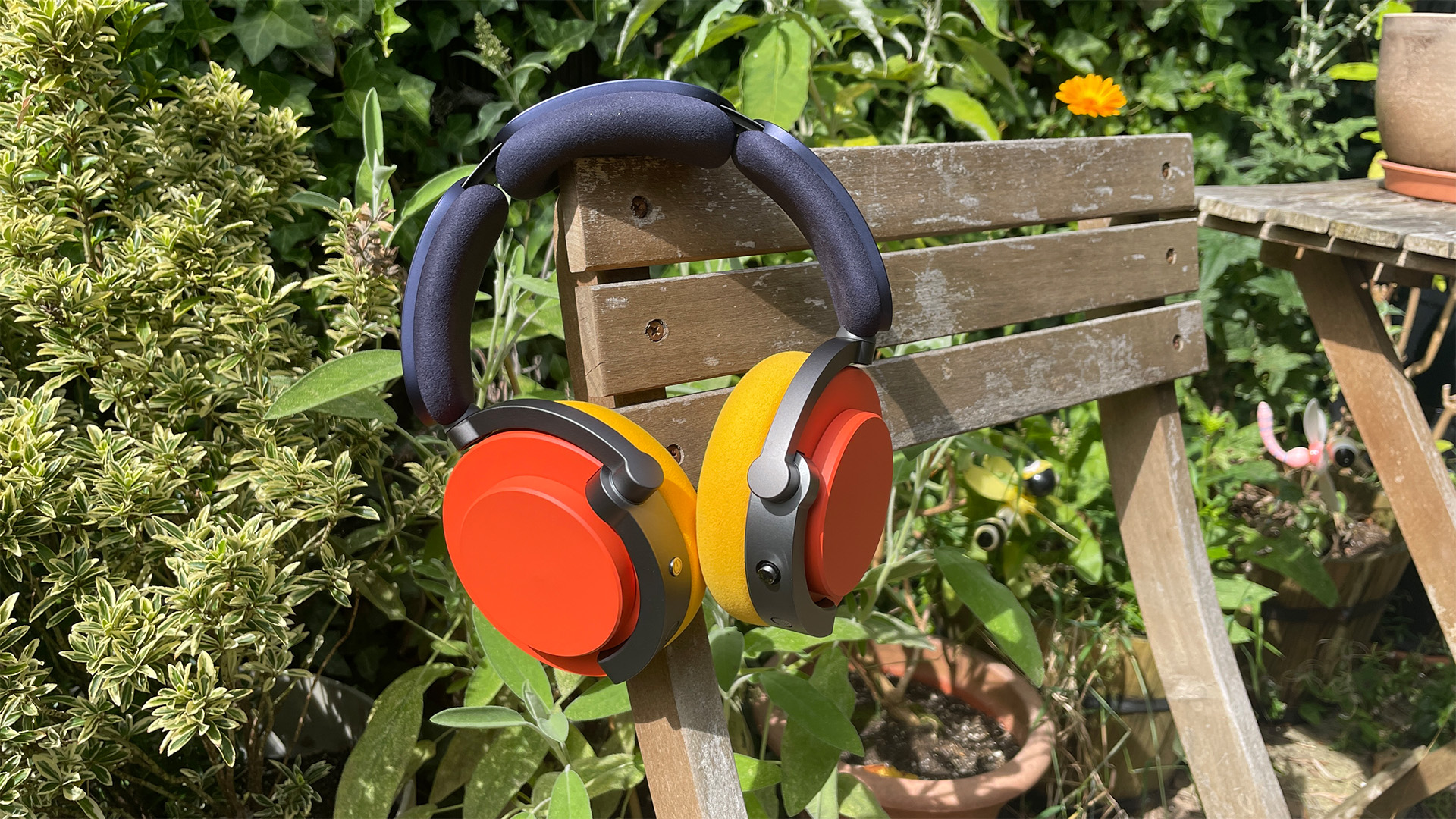Dyson, Sonos and the three-star problem: what first-time wireless headphones are getting wrong
Innovation is great, but getting the basics right is more important

It's been a fascinating year for premium wireless headphones, with two new brands entering the fray. Dyson and Sonos have both flung their hats into this uber-competitive ring, but while both products have received a three-star review from us, the details aren't that simple.
In fact, despite both being wireless, over-ear noise-cancelling models, the Dyson OnTrac and the Sonos Ace are two very different headphones in design and in use, and with very different USPs. One has bold, colourful customisation options with a huge battery life; the other is minimal and subtle with a TV Swap feature for compatible soundbars in its ecosystem.
Both these headphones' strengths and weaknesses are in completely different areas. Putting sound quality to one side (that's a whole different conversation), it's the practical, functionality and usability issues that have come under scrutiny in both reviews. It's these areas in which both models needed to be near-perfect – or more well thought out and seamless – to not just square up against some of the best in the business, but to be truly worth the high asking price attached to these premium wireless cans.
The Sonos Ace cost £449 / $449 / AU$699. The Dyson OnTrac cost £450 / $500 / AU$799. That's an awful lot of money for a pair of wireless headphones, and not a lot of room for error. So why aren't they getting the basics right?

That Dyson and Sonos have even decided to get into headphones is a brave endeavour, but starting at the premium end comes with punishingly high expectations. This is an area where established brands such as Apple, Bose, Bowers & Wilkins, Focal and (admittedly at a lower price) Sony have successfully dominated with five-star models, so it wasn't going to be easy. There are different expectations for each model too: while Sonos has proven experience in wireless streaming with its multi-room talents, it's Dyson's first go at any consumer audio product (the mask-equipped air-purifying Dyson Zone notwithstanding). At this ambitious, premium level, they really needed to get more than just the sound quality right.

The Sonos Ace headphones have a minimal, subtle, lightweight profile that is suitably designed for continuous portable use. The Dyson OnTrac, while super comfortable with their ultra plush and thick ear cushions, are large, heavy and get our ears too hot, too quick. For active noise-cancelling (ANC) headphones with impressively long battery life (55 hours!), the Dysons are bulky and cumbersome. We'd go as far as to say they're pretty impractical as a portable pair compared with the evolved, ultra-practical design of Bose's QuietComfort Ultra Headphones. While Sonos has gone for physical control buttons that work well, Dyson uses a mix of physical and touch: both decent concepts, but the execution needs to be refined and less fiddly – especially at this price point.
The Sonos Ace tick all the essential features you'd expect of a new, cutting-edge pair of headphones: Bluetooth 5.4, multi-point Bluetooth, spatial audio and a few more controls in the app. There are issues at launch, however: the unique TV Swap feature that lets you send audio from your headphones to a connected Sonos soundbar (and back again) at the tap of a button was glitchy during our testing, and was only compatible with the Sonos Arc at first. This feature was also only available to iOS users at launch, too. The other unique Ace feature – TrueCinema calibration – is still TBC. It was hard not to feel like you were using an unfinished product that was released too soon.
Get the What Hi-Fi? Newsletter
The latest hi-fi, home cinema and tech news, reviews, buying advice and deals, direct to your inbox.
A software update, two months since the Ace's launch, now opens up compatibility with other Sonos soundbars and Android users – but is it too much to expect these features to be ready for buyers to use straight away? For a brand with such a strong reputation for reliable software and streaming, it was disappointing to experience such lapses in compatibility and seamless use.

Dyson, on the other hand, comes with zero expectations (it just didn't have to look as silly as that Zone model, really) and it's a bold effort for its first go. The customisable outer caps and ear cushions are genuinely exciting, and brilliantly conceived and machined (if also expensive, at £/$50 per pair). But they are curiously lagging behind the competition when it comes to features, being equipped with the older Bluetooth 5.0 version – meaning no multi-point Bluetooth, no spatial audio and reduced range and data speeds compared with newer Bluetooth versions. Even more bafflingly, the Dysons have a poor IP51 rating, clarifying that these headphones are not waterproof. For a brand originating in the UK, where we're pretty well known for our wet weather, this is a pretty shocking omission. (For balance, Sonos doesn't even quote an IP rating for the Ace.)
There are missing features that may well appear with future software updates. But are we really relying on software updates post-purchase for a complete, better-functioning product? Should customers have to wait weeks and months after their considerably expensive purchase to get the full benefits and features promised? Isn't it better that they buy a fully functional, finished product that they can enjoy from day one? Dyson may not be able to rectify our issues with its physical attributes so easily – that's one for the successive model, we imagine – but we're puzzled that the practical issues with size, overheating and fiddly controls didn't come up during the development phases.
| Header Cell - Column 0 | Dyson | Sonos |
|---|---|---|
| Bluetooth version | 5.0 | 5.4 |
| Codec support | AAC, SBC, LHDC | AAC, SBC, aptX Lossless |
| Spatial audio? | No | Yes |
| ANC and Transparency Mode | Yes | Yes |
| Battery life (with ANC on) | 55 hours | 30 hours |
| Weight: | 451g | 312g |
What Hi-Fi? always judges products on a performance-per-pound basis, meaning the expectations we have of how a pair of wireless headphones should perform and behave go higher as the price gets higher. We also take stock of current context, new products and latest technology as all these parameters rapidly advance and evolve. A lack of certain features we could forgive at £50 or £150; much less so at £450. At this premium price point, where there's little margin for error and buyers are expecting a high-quality, flawless product experience, these little issues in build, comfort, use and (lack of) features can add up to an unsatisfying experience.
Ultimately, why should people shell out so much cash for a product that is either unfinished, glitchy or not quite practical for their needs, when far better alternatives are available from brands like Apple, Bose, JBL and Sony? Leaving sound quality and ANC quality aside for a moment (while those are undoubtedly important), it's the practical issues for essential every day use that matter quite a lot with headphones. So despite the impressive claims made for ANC, battery life and design, it's these aspects that brands really need to get right before we even get to how they sound.

We won't go into the sound quality aspect here as we've written many paragraphs in the respective Dyson OnTrac and Sonos Ace reviews going into detail about their audio merits (and demerits...), but suffice it to say that the standard of sound performance expected and delivered by the class-leaders is also high at this price point, and Dyson and Sonos have a long way to go to reach those heights.
Brands like Bose and Sony have honed their headphones' design and performance over the years, with every iteration allowing them to learn from previous models, catering to customer demands and new technology, refining along the way to out-do the previous generation every time. They feel like quality, well-thought-out products that are satisfying to use right from the start; Apple's AirPods Max are a rare example of getting the performance right in the company's first try, and they still feel and look like a luxurious pair of premium headphones.
It's a learning curve, and Dyson and Sonos are just getting started. If they intend to stay in the headphones market, competitive as it is, then they need to learn and adapt. And we do hope they do, as we'd love to see the next generation of the Ace and OnTrac be more refined and fit for purpose, with all these little practical issues fixed so they can fully concentrate on improving performance. The good news for both brands is that it can only get better from here.
MORE:
Read our full Dyson OnTrac review
And our full Sonos Ace review
Check out the best wireless headphones we recommend

Kashfia is the Hi-Fi and Audio Editor of What Hi-Fi? and first joined the brand 13 years ago. During her time in the consumer tech industry, she has reviewed hundreds of products (including speakers, amplifiers, turntables and headphones), been to countless trade shows across the world and fallen in love with hi-fi kit much bigger than her. In her spare time, Kash can be found tending to an ever-growing houseplant collection and shooing her cat Jolene away from spinning records.
